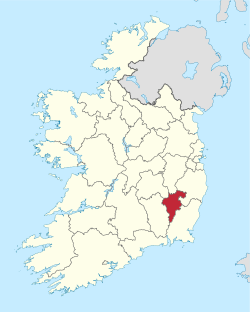Carlow County Council Comhairle Chontae Cheatharlach | |
|---|---|
 | |
 | |
| Type | |
| Type | |
| Leadership | |
Ken Murnane, FF | |
| Structure | |
| Seats | 18 |
 | |
Political groups |
|
| Elections | |
Last election | 7 June 2024 |
| Meeting place | |
 | |
| County Buildings, Athy Road, Carlow | |
| Website | |
| Official website | |

Carlow County Council (Irish : Comhairle Chontae Cheatharlach) is the local authority of County Carlow, Ireland. As a county council, it is governed by the Local Government Act 2001. The council is responsible for housing and community, roads and transportation, urban planning and development, amenity and culture, and environment. [1] The council has 18 elected members. The head of the council has the title of Cathaoirleach (chairperson). The county administration is headed by a chief executive, Coilín O'Reilly. The county town is Carlow.